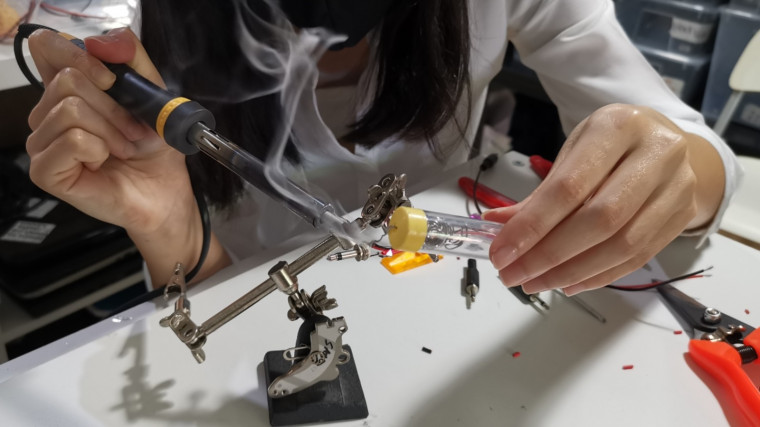In a rundown shophouse in Little India, wobbly bookcases that serve as worktables line up at waist height along the railings of the second floor landing. The surface of the makeshift worktable is strewn with black and red wires, blobs of hot glue and button switches.
Under a study lamp, I hunch over the black-and-red confetti with a soldering iron in one hand and a wire in the other, ready to solder a wire strip to a male jack plug for an assistive device. Running between my legs and meowing loudly is Kitty, a stray cat that has made its home at Engineering Good.
I’m here to learn how to modify toys for children with disabilities. With me is Saad, a volunteer who conducts the two hour-long workshop. It’s a dry run today so I’m the only one there.
The toys have been donated to Engineering Good, the non-profit organisation that Saad volunteers at, where they would be modified for children with disabilities. He helps to research these devices under a new initiative, called SalvageGarden.

The sample device looks easy to assemble, but the soldering iron’s handle is distractingly warm, and the parts I have attached to the third hand (a stand with two flexible clamps that hold pieces so that my hands are free to work) are so delicate that I have to squint to land the molten lead accurately on the wire.
I am a complete newb to working with wires, let alone making a device. But Saad is encouraging, and allows me to experiment. “There’s over 600 ways to solder these together,” he says, “so whatever works for you, try it!”
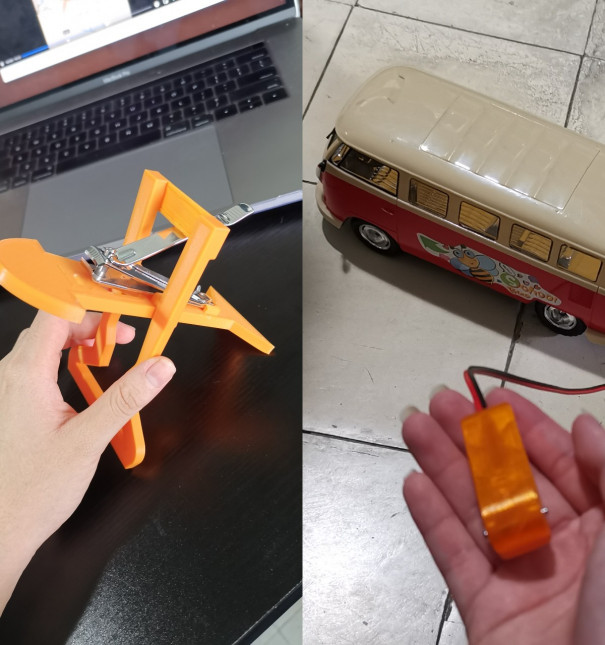
Saad, 37, started his volunteering journey at Engineering Good. During his workshops, he patiently guides others like me to make devices to help people with disabilities interact and use everyday items.
What we are doing, SalvageGarden, is a new programme by Engineering Good, which aims for a greener environment by repurposing or recycling leftover parts from donated computers. Saad and Miak are volunteers involved with the programme.
Saad hovers over the 3D printing station, using donated filament to make parts – switches, pen holders and zips – for his lessons at makerspaces and workshops for children and adults.
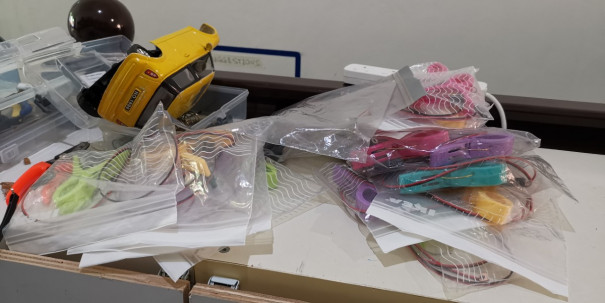
Sprouting the idea
Engineering Good was started in 2014 by a group of engineers who wanted to empower the less fortunate with technology. Since then, the organisation has been working to help people with disabilities live independently.
When the circuit breaker hit, internet access became a necessity for low-income families who couldn’t afford laptops for home-based learning. Engineering Good responded with Computers Against Covid, a programme to refurbish and donate laptops for these families.
The high demand for laptops meant all hands on deck, so Saad, who had up till then been an irregular volunteer, pitched in almost every day.
It was as he was testing donated laptops that Saad came up with SalvageGarden, which he hopes to develop into a community makerspace to teach people how to repair their devices, or to simply get hands-on experience in the world of engineering.
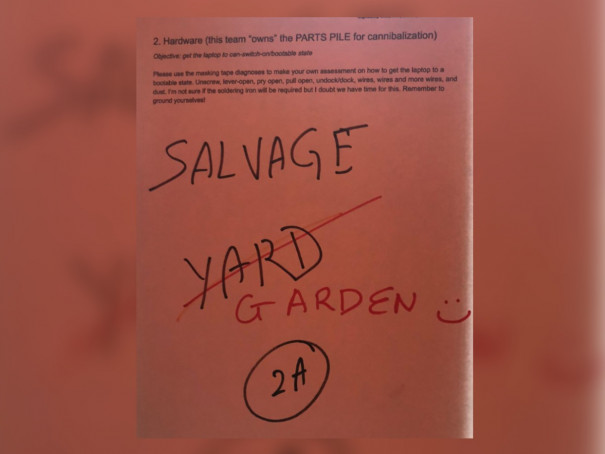
It was after the circuit breaker that SalvageGarden really got going.
From managing e-waste from unwanted laptop parts, it soon evolved into teaching others how to repair technology devices, or to modify it for people with special needs.
Finding ways to reduce e-waste
Especially when 3 in 5 Singaporeans are unsure of how to properly dispose of e-waste, which could lead to incidents like recycling bins bursting into flames, SalvageGarden is a timely response to a modern-world problem.
Having tinkered with gadgets for most of his life, Saad is a proud self-proclaimed geek. Outside of Engineering Good, he is the co-founder of Spudnik Lab, a non-profit that aims to bridge the digital divide by providing internet access to those who need it at a low cost. He believes that teaching others how to repair electronic devices comes with major benefits – including the reduction of e-waste.
“I’ve learned that it’s usually neither a tech problem nor a need for tech to solve it. It’s about listening and understanding. People are unfamiliar with systems and abstraction, and we fear what we don’t understand,” he wrote in an article.
He tells me that he has noticed many devices getting thrown away just because people don’t know someone who can fix it. So he encourages fellow techies not only to help repair broken devices for their friends, but to also teach them how to fix it.
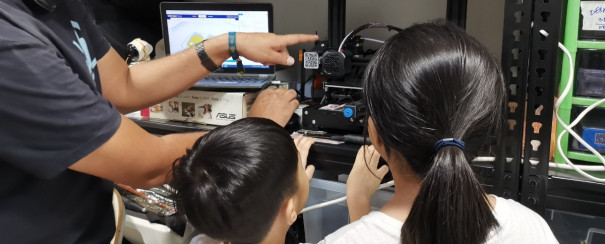
Other stories you might like


Weeding the SalvageGarden
But not all devices can be salvaged. These would have to be disposed of responsibly.
Miak, 33, oversees the e-waste handling in SalvageGarden.
Under her supervision, SalvageGarden works with Virogreen to manage the recycling process for unwanted gadgets.
The global e-waste recycling company periodically drops by Engineering Good to ferry unwanted parts back to its factory for processing. After which, Miak gets a detailed breakdown of what was recycled, which comes up to about a small, one-digit token sum per kg for the laptops.
“It’s not much,” she tells me, “ but it helps the organisation a lot.”
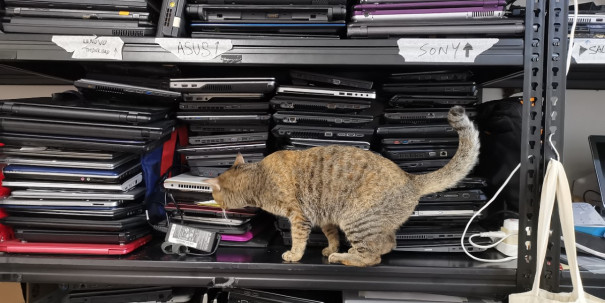
Despite her professional background in sustainability and environmental work, Miak never saw herself volunteering at Engineering Good at first.
“I actually got roped in to help when my husband came to play board games with (Engineering Good founder) Johann,” she says with a chuckle.
She started volunteering just before the circuit breaker kicked in and grew to enjoy the experience. The avid animal lover tells me that she tried volunteering at pet shelters, but never felt like she belonged. But over here, she says, she has found good company while learning about computers.
“We call this a clubhouse because we like to hang out together and almost always order prata,” she jokes.
And to her surprise, not everyone has a background in engineering. “There’s also so many people here from all walks of life,” she says. Engineering Good has around 200 volunteers and three full-time staff.
Her specific role is minor but critical, says Miak. “I make sure that the engineers don’t toss parts into the wrong bins. Lithium-ion batteries are flammable, for example!”
She also looks after Kitty, the stray cat that wandered into the Engineering Good shophouse the day they moved in. Playing with the friendly feline, she uses a plastic bag attached to a donated fishing rod to distract the cat.
“She adopted us,” Miak says with a laugh, “not the other way around.”
New seeds planted
During the circuit breaker, Engineering Good set up shop at its Kerbau Road premises, a stone’s throw away from Little India MRT. It was only then that Saad could get SalvageGarden going.
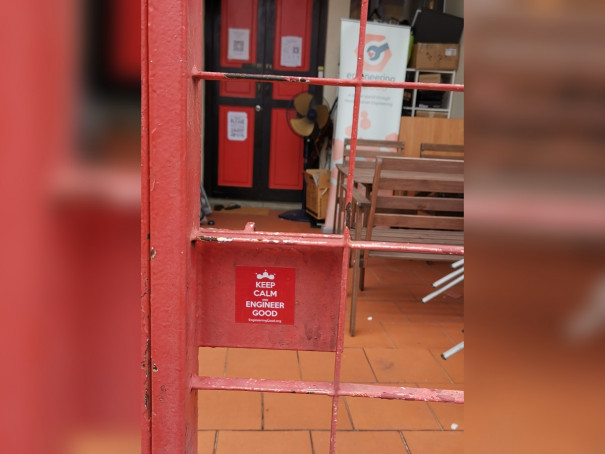
The organisation had struggled to find a permanent place during the circuit breaker. Prior to that, it relied on borrowed spaces, big and small.
“Companies were kind enough to lend us a part of their makerspace,” Saad recalls, “and during the circuit breaker, when Computers Against Covid was in full swing, we took over the empty office, so the sorting and testing process was a lot easier.”
Though smaller, the fact that they can call the place their own, means Saad can confidently embark on realising his vision.
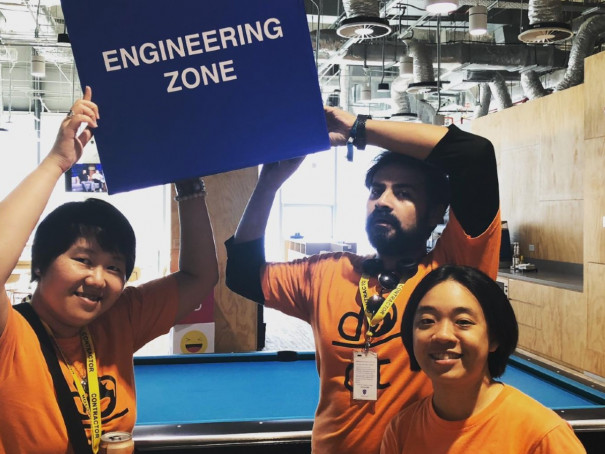
“Now that we have a place for ourselves, I can actually make this a whole new initiative,” he says, gesturing to an empty wall in the clubhouse. “This is going to be a real makerspace – over there, I’m going to have two pegboards stocked with equipment,” he says excitedly.
Regarding laptop and desktop donations, Miak says the organisation is looking at the bigger picture. “We’re getting corporations to donate their devices to us,” she says, “because their tech refurbishments are often by the hundreds.”
Laptops are not the only donations that Engineering Good needs though. As Miak and I thread our way through the shophouse, she points out other donations.
Mismatched tables and chairs furnish both floors. Sticky notes and whiteboards filled with reminders dot the walls. At the entrance, a huge maroon massage chair sits right next to a refrigerator, with a wine rack stacked on top. Computer bags, storage boxes, and bundles of cables, all labelled with masking tape, jut out of the crammed shelves.
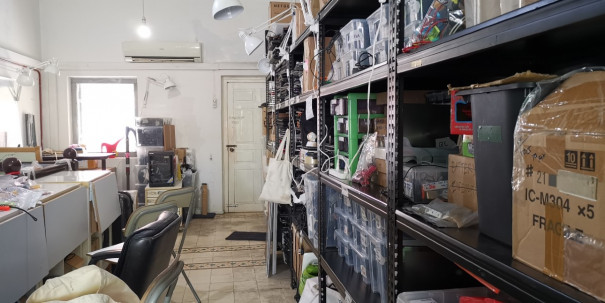
Miak chuckles at the chaos. “These are all donated, but don’t be deceived by how it looks. This is where the magic happens.”
As for workshops, Saad is looking forward to conducting his next one at a university. “This one’s only open to students within that university, but once the situation lets up there’s going to be ones that are open to the public,” he says.
Pointing to his Engineering Good shirt, he explains the design with a grin: “This is a differentiation formula, the ‘d’ stands for difference, ‘t’ for time… And this is the Earth. So we make a difference to the Earth, over time.”
If you like what you read, follow us on Twitter and Google News to get the latest updates.
